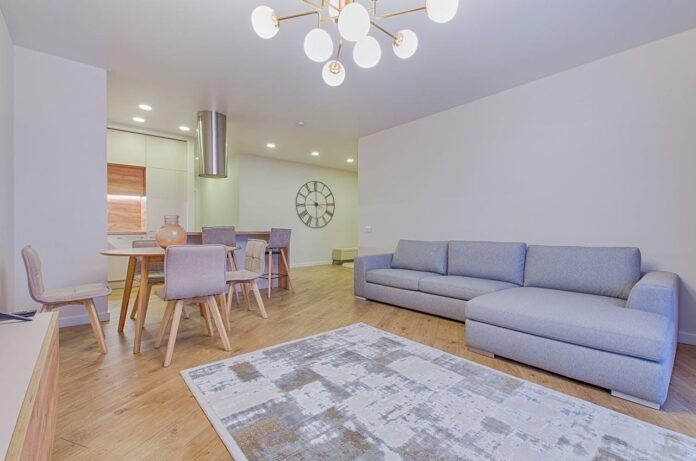Last Updated on September 2, 2025 by Nadeem Ahmed
Have you ever stepped into a home and thought, ‘This feels right’—without knowing exactly why? It’s not always about the size or style. Sometimes, it’s just the way the space works. The air feels calm, the light feels easy, and everything flows.
Now think about the opposite. A place that looks great but feels off. Maybe it’s too chilly or strangely quiet. Maybe the lighting is harsh, or the rooms just don’t feel lived in. It’s not always clear why, but you notice.
That kind of comfort matters more now than ever. As homes double as offices, classrooms, and resting spaces—especially in places like Hendersonville, TN, where weather and growth collide—getting that balance right really counts. Creating a home that naturally feels right from day one requires thoughtful planning and expert craftsmanship. Experienced custom home builders sydney a specialize in designing spaces that seamlessly blend comfort, functionality, and personal lifestyle needs, ensuring your home works perfectly for how you actually live.
In this blog, we will share what truly makes a house feel “just right,” how the smallest choices shape comfort, and why the feeling of home runs deeper than appearances.
Table of Contents
Comfort You Can Feel (But Not Always See)
Home comfort is more than a cozy couch or the right paint color. It’s the kind of comfort you feel in your bones when the air is clean, the temperature is steady, and everything just works. It’s not dramatic. It’s not flashy. But it’s essential.
If you’ve ever lived through a Tennessee summer or a chilly snap in January, you know what we’re talking about. Climate plays a huge role in how we feel in our homes, especially in a place like Hendersonville. The temperatures can swing fast, and if your house isn’t built to handle those changes, your comfort goes with it.
That’s why so many homeowners turn to a reliable HVAC company in Hendersonville, TN, when things feel off. Not just when something breaks—but when something doesn’t feel right. Because maintaining a balanced indoor climate year-round isn’t just about avoiding discomfort. It’s about preserving the peace in your space.
Even the smallest temperature imbalance can throw off your mood. Too much humidity, and everything feels sticky and slow. Too dry, and your skin starts to itch and your throat goes scratchy. And when systems run inefficiently, energy bills climb without your home feeling any better.
That’s where local expertise matters. A team that understands the specific challenges of homes in your area can offer solutions that work with your house, not against it. And once your air feels right, everything else falls into place much more easily.
When Function Sets the Tone
One reason a house feels “off” is when things don’t work the way they should. You flip a switch, but nothing happens. You close a door, and it doesn’t quite latch. You open a drawer, and it jams halfway.
They sound like little things. But over time, they chip away at your comfort. They remind you that something’s wrong, even when everything looks fine. That’s why function—smooth, simple, everyday function—is such a huge part of what makes a home feel good.
When everything runs as expected, you relax. You stop thinking about the thermostat, the air filters, the noisy vent. Your home works with you. Not against you.
This has become even more important in a time when people are focused on wellness, routine, and mental clarity. A broken appliance or an inconsistent system can become one more piece of friction in a world that already moves fast. So fixing those quiet annoyances—whether it’s a sluggish fan or a window that doesn’t open—can lift more weight off your shoulders than you think.
Senses That Shape the Space
It’s easy to think of comfort as visual. And sure, what we see matters. But what we smell, hear, and touch plays a bigger role than we give credit for.
A house that smells stale never feels fresh, no matter how clean it is. A constant hum from the ceiling fan can keep you on edge. Harsh lighting can make you feel tense without you even realizing it. These are the little background conditions that either help you unwind—or keep you slightly annoyed.
So part of creating the “just right” feeling is paying attention to the senses. Swap out a noisy fan. Add a soft rug to a room with an echo. Use warm bulbs instead of cool ones. Diffuse a light, clean scent—not something that tries to cover up smells, but something that complements the room. Each adjustment brings the space closer to feeling intentional.
And here’s the fun part: once you get the basics right, the rest of the design has room to shine. That gallery wall, the plant shelf, the throw pillows—all of them work better when the background feels calm and collected.
People Shape the Feeling Too
A house doesn’t feel right because of square footage or fancy upgrades. It feels right because it reflects the people who live there. The routines, the memories, the small touches—these things make a space feel like home.
So sometimes, comfort isn’t about fixing something that’s wrong. It’s about adding something that makes you smile. A photo you actually like. A chair that faces the light. A place to sit with your coffee in the morning that doesn’t also double as a work zone.
That’s part of what the past few years have reminded us. As the world outside changes fast, our homes have become a kind of anchor. A place to reset, to connect, to feel steady.
And while upgrades and repairs help, what really gives a home soul is how you use it. Do you laugh there? Do you rest there? Do you feel like yourself there? If the answer is yes, then you’re doing something right.
The Sweet Spot Between Simple and Intentional
There’s no one-size-fits-all answer for what makes a house feel just right. But it’s almost always a mix of small, thoughtful choices that come together with time. It’s comfort without chaos. It’s style without stress. It’s systems that work and rooms that feel good to walk into.
If something’s off, it’s worth looking into—not because your home needs to be perfect, but because it should support you. That’s where real comfort lives. Not in expensive furniture or endless renovations. But in how your home makes you feel day after day.
So pay attention to the small stuff. Fix what’s broken. Call in help when it matters. And most of all, listen to what your home is telling you.
Chances are, it already knows what “just right” looks like. It’s just waiting for you to notice.
Apart from that, if you are interested to know about “The Homeowner’s Repair Checklist: From Leaks to Loose Hinges” then visit our “Home Improvement” category.



























